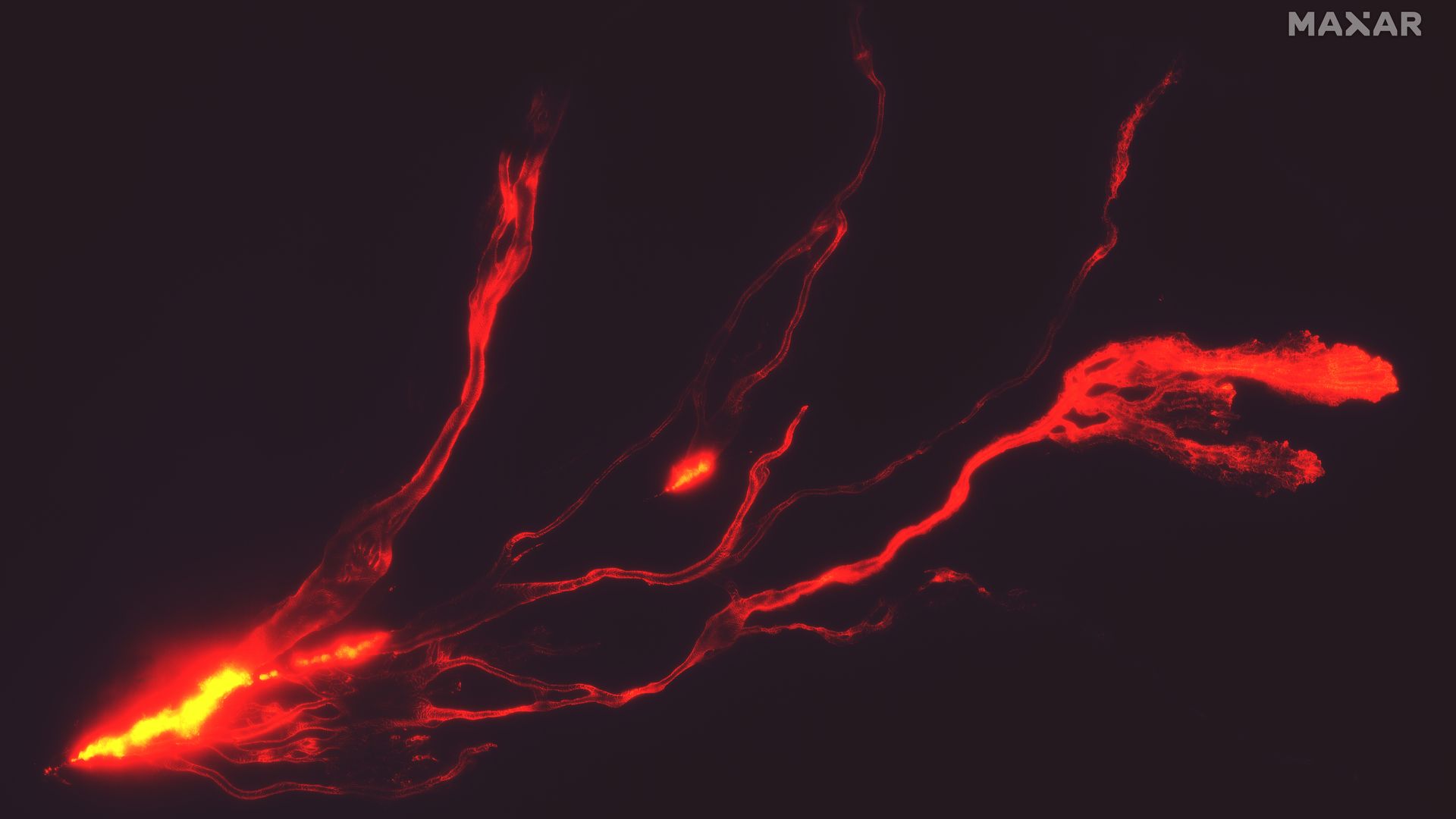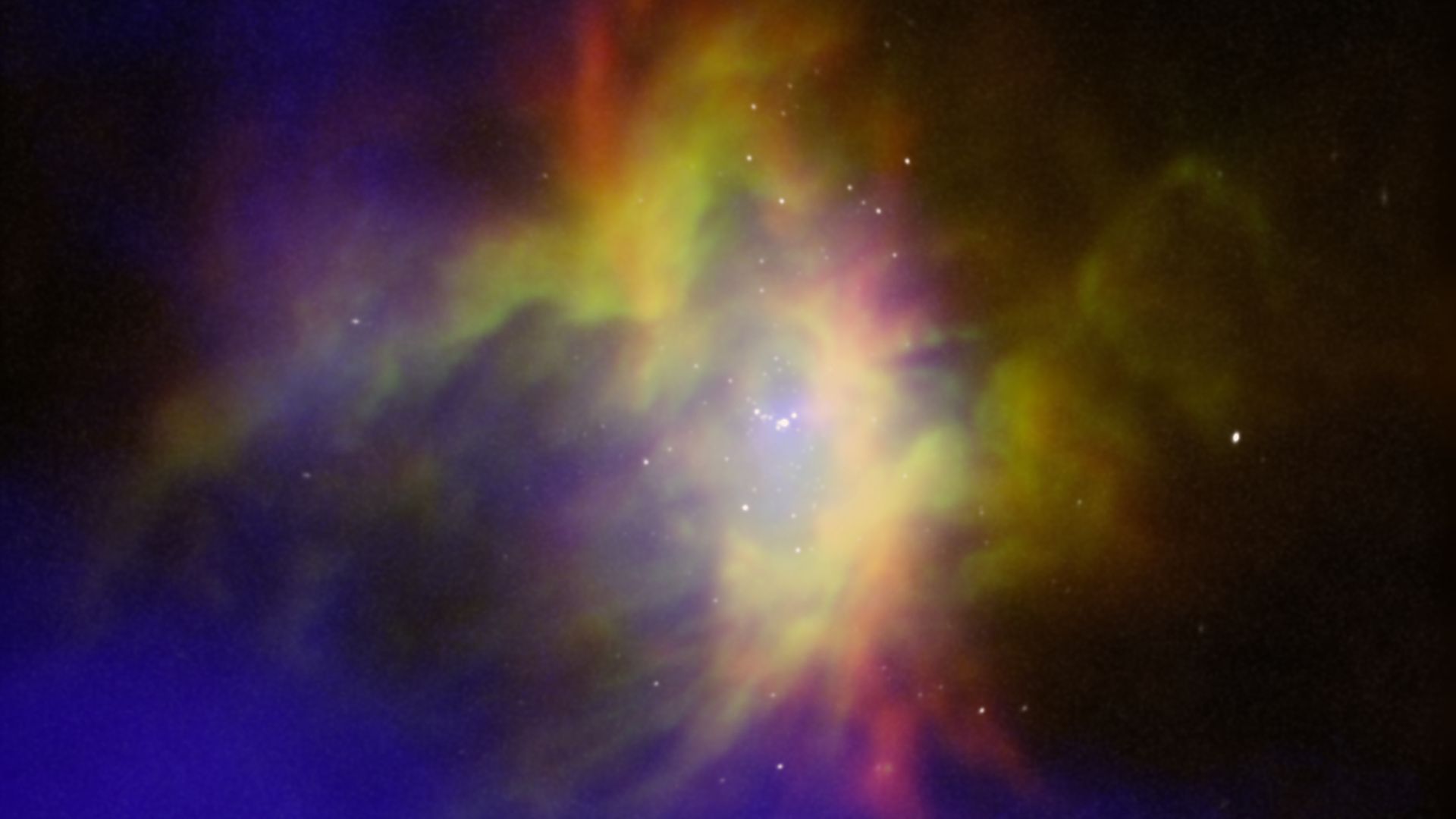| | | | | | | Presented By the National Pharmaceutical Council | | | | Axios Science | | By Alison Snyder · Dec 01, 2022 | | Welcome back to Axios Science — and somehow to December?! This week's newsletter is 1,484 words, about a 6-minute read. - Send your feedback and ideas to me at alison@axios.com.
- 🇨🇭Axios will be at the 2023 World Economic Forum in Davos, Switzerland. If you'll be there and want to attend one of our events, request an invite here.
- Sign up here to receive this newsletter.
| | | | | | 1 big thing: AI beats human players at complex games |  | | | Illustration: Shoshana Gordon/Axios | | | | Two new papers from AI powerhouses DeepMind and Meta describe how AI systems are notching wins against human players in complex games involving deception, negotiation and cooperation. Why it matters: Machine contenders have struggled with games where information is incomplete or hidden from players — similar to the intentions of humans in daily life and interactions. Driving the news: Researchers from DeepMind outline a new autonomous agent, called "DeepNash" that learned to play the game Stratego, in a paper published today in Science. - Stratego is played between two people who each move 40 pieces with different ranks — that can't be seen by their opponent — with a goal of capturing the other player's flag.
- DeepNash couldn't play Stratego by searching all possible scenarios because there is an "astronomical" number, the DeepMind team writes — far more than in chess, Go and poker, which AI systems have defeated.
How they did it: The DeepMind team combined an algorithm for learning the game through self-play and another that steers that learning toward an optimal strategy. - DeepNash learned the game from scratch by playing about 5.5 billion games against itself over four months.
- The AI agent beat other existing Stratego bots, which play at an amateur level, more than 97% of the time, they report. It won 84% of the time against human expert players on an online gaming platform, sometimes by bluffing and deceiving.
- DeepNash can "handle huge amounts of uncertainty in the form of imperfect information, more than has previously been possible," DeepMind research scientists Julien Perolat and Karl Tuyls, who are co-lead authors of the paper, said in an email.
Meta researchers last week described an AI system called "Cicero" that they report can play the game Diplomacy at the level of humans. - In Diplomacy, up to seven players negotiate, deceive and build alliances to try to win control of territories on a map.
- "Cicero integrates a language model with planning and reinforcement learning algorithms by inferring players' beliefs and intentions from its conversations and generating dialogue in pursuit of its plans," they wrote in Science.
- In 40 games of a blitz version of Diplomacy where the time for each move is limited to five minutes, Cicero scored more than double the average score of human players it went up against on a gaming platform.
Of note: Some experts say AI systems that can play these games raise concerns about machines having the ability to deceive. - Cicero "passed as a human player in 40 games" with 82 unique players, the Meta researchers reported.
- They also said they were able to control the AI's dialogue to be "largely honest and helpful."
The big picture: Experts debate how much mastering games will help to develop intelligent machines that can navigate the world of humans. - Some argue their rules are specific and winning on the board doesn't easily extend to a range of real-world problems.
- But others say some of the skills required to win games of strategy could lead to real-world applications and are necessary to advance some subfields of AI.
Read the entire story. |     | | | | | | 2. Mauna Loa volcano eruption halts recording of key climate data |  | | | Mauna Loa's lava flow is seen moving along the Northeast Rift Zone on Nov. 28. Photo: Satellite image ©2022 Maxar Technologies | | | | The famous Keeling Curve used to track the buildup of carbon dioxide in the atmosphere since 1958 may soon have a rare data gap, Axios' Andrew Freedman reports. Driving the news: The Mauna Loa eruption on Monday cut power to the observatory where atmospheric carbon dioxide levels are measured, according to the Scripps Institution of Oceanography. The big picture: Mauna Loa's spectacular eruption is forcing Ralph Keeling, the son of Charles David Keeling, who began carbon dioxide measurements on the peak in 1958, to find a similar location to take CO2 readings in the meantime. - Such observations would then be used as a proxy to help account for the period of missing Mauna Loa data.
- The observatory, which NOAA operates, is ideal for taking CO2 readings because it stands at 11,315 feet, well above the higher, transient pollution levels present below, and is free of vegetation.
- It is also remote and representative of the global atmosphere.
Between the lines: In an interview, Keeling told Axios there is an "all-hands-on-deck" effort to find a nearby, suitable location to gather CO2 measurements. - "In the long run, but I don't know how long, the station will be up again. So the record will continue as before, and we'll have some kind of gap where the data is slightly different or missing," Keeling said.
Context: This is not the first time an interruption occurred, but they have been rare. A three-month gap followed budget cuts in 1964, according to Keeling, while a break (though not a gap in the chart, which shows monthly readings) occurred during an eruption in 1984. Read the entire story. |     | | | | | | 3. The hunt for aging clues in dog DNA |  | | | Illustration: Maura Losch/Axios | | | | Dog owners taking part in a new study are receiving personalized information about their canine companions' age while contributing doggie data to an effort to extend the lifespan of pups and humans alike. Why it matters: Dog aging data is being plumbed by scientists in search of clues about the drivers of canine — and human — aging, and how drugs might one day be used to delay it. How it works: Organisms have a chronological age and a biological age. The latter accounts for an individual's habits, behaviors, disease and other factors affecting the body's health and functioning over time. - Individuals — human, canine or otherwise — age at different rates, and the effects of aging seen in tissues and cells can appear at different times in individuals of the same chronological age.
- Scientists are searching for molecular markers to measure biological age across animals.
What's happening: One marker of intense interest: a chemical modification that changes the structure — but not the sequence — of DNA as an individual ages. - It involves the addition of methyl groups — a molecule made up of one carbon and three hydrogen atoms — to specific sites on DNA, turning genes on and off.
- These methylation patterns, which change over time and are affected by an individual's behavior or environment, have been used to predict chronological age in a range of species, and are being studied as indicators for biological age.
Driving the news: San Francisco veterinary medicine startup Loyal is reporting results from its X-Thousand Dogs study that looked at DNA methylation in about 1,600 dogs from 48 U.S. states, which the company shared first with Axios. - The canine cohort includes 187 breeds — mixed, pure and designer — with ages ranging from puppies to 12 years old.
- Participants provided a saliva sample from and health information about their dog, including their feeding routine and energy level.
What they found: The Loyal researchers measured levels of methylation across the samples and found a correlation between dogs' reported chronological ages, predicted ages and DNA methylation patterns, says Erica Andrews, a researcher at Loyal. - The reported results are consistent with previous findings in other aging and methylation studies.
- Accurate estimates of a dog's age — especially those that were adopted with an unknown age — could help owners care for their companions, the company says.
But, but, but... The study isn't designed to diagnose diseases — it is providing a broad indication of age, Andrews says. - Methylation may be just one facet of biological aging.
The big picture: Loyal and other groups, including the Dog Aging Project and Vaika project, are trying to develop drugs to delay aging in dogs and increase their lifespan. - Dogs, which have similar lifestyles and aging trajectories as their owners, share some age markers with humans, according to research published earlier this year.
- Ultimately, researchers hope to leverage similarities between dogs and people to create drugs that delay aging in humans.
|     | | | | | | A message from the National Pharmaceutical Council | | 340B: Good policy requires thorough research | | |  | | | | Who benefits from 340B is an important question that doesn't have a clear answer. Okay, but: Health policy researchers can't discern who is benefitting from this program until we have transparency. It's time for an honest conversation about 340B. | | | | | | 4. Worthy of your time | | New Alzheimer's drug faces uncertain regulatory path (Caitlin Owens and Oriana Gonzalez — Axios) Pink snow is a red flag for the West's water (Kylie Mohr — High Country News) Can plants see? The answer's still unclear (Christie Wilcox — The Scientist) Physicists create "the smallest, crummiest wormhole you can imagine" (Dennis Overbye — NYT) |     | | | | | | 5. Something wondrous |  | | | A composite image of RCW 36 that includes X-ray and infrared data. Credits: X-ray: NASA/CXC/Ames Research Center/L. Bonne et al.; Infrared: ESA/NASA.JPL-Caltech/Herschel Space Observatory/JPL/IPAC | | | | Certain star clusters self-regulate — preventing an over-abundance of stars forming in a given area, according to a study, Axios' Miriam Kramer writes. Why it matters: Galaxies grow through star birth, so understanding the ins and outs of how stars form and grow is key to learning more about the evolution of our universe. What they found: The study in The Astrophysical Journal looked at data gathered by multiple telescopes looking at the star-forming region of gas RCW 36, about 2,900 light-years from Earth. - The largest stars in the cluster can propel gas needed to form new stars away from the region before too many are born.
- "RCW 36 contains a cluster of young stars and two cavities — or voids — carved out of the ionized hydrogen gas, extending in opposite directions," NASA said in a press release.
- "There is also a ring of gas that wraps around the cluster in between the cavities, forming a waist around the hourglass-shaped cavities."
|     | | | | | | A message from the National Pharmaceutical Council | | 340B: Where is the money going? | | |  | | | | It's the fundamental question health policy researchers should be asking about 340B. Transparency requirements would provide the needed oversight and accountability for this program. It's time for an honest conversation about 340B. | | | | Big thanks to Peter Allen Clark for editing and Carolyn DiPaolo for copy editing this edition. |  | | Are you a fan of this email format? Your essential communications — to staff, clients and other stakeholders — can have the same style. Axios HQ, a powerful platform, will help you do it. | | | | | | Axios thanks our partners for supporting our newsletters. If you're interested in advertising, learn more here.
Sponsorship has no influence on editorial content. Axios, 3100 Clarendon Blvd, Arlington VA 22201 | | | You received this email because you signed up for newsletters from Axios.
Change your preferences or unsubscribe here. | | | Was this email forwarded to you?
Sign up now to get Axios in your inbox. | | | | Follow Axios on social media:    | | | | | |
No comments